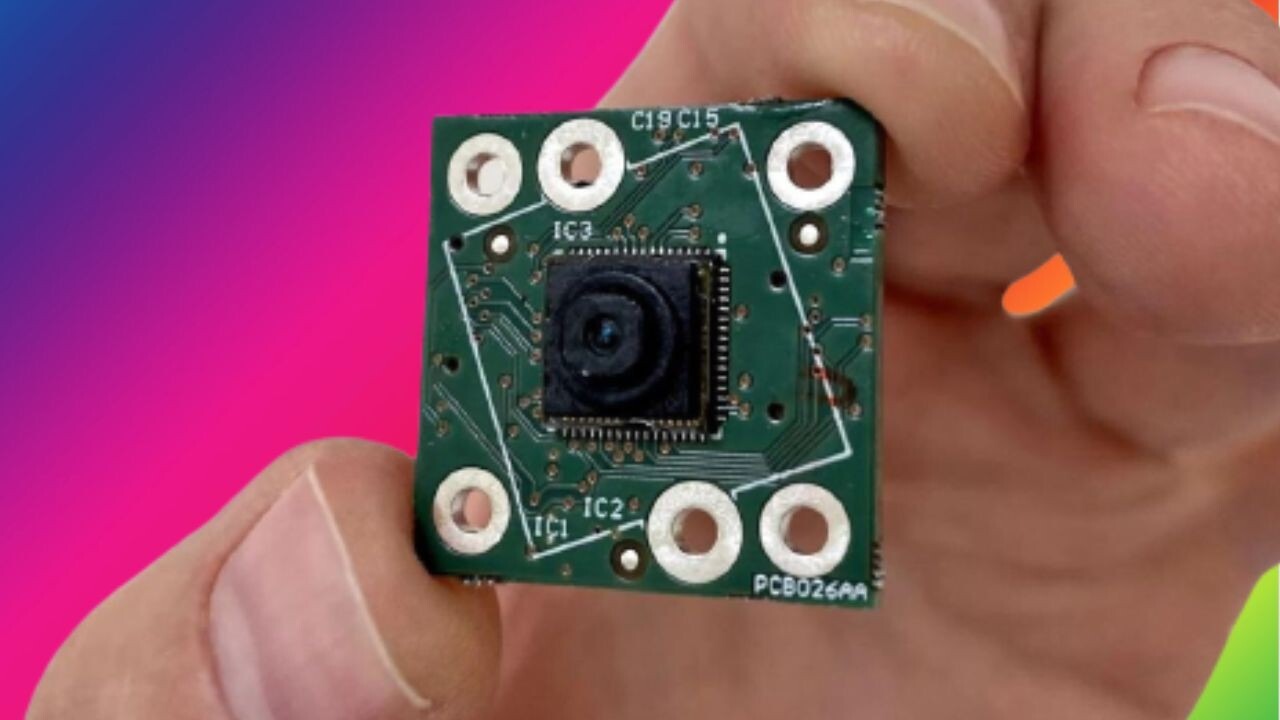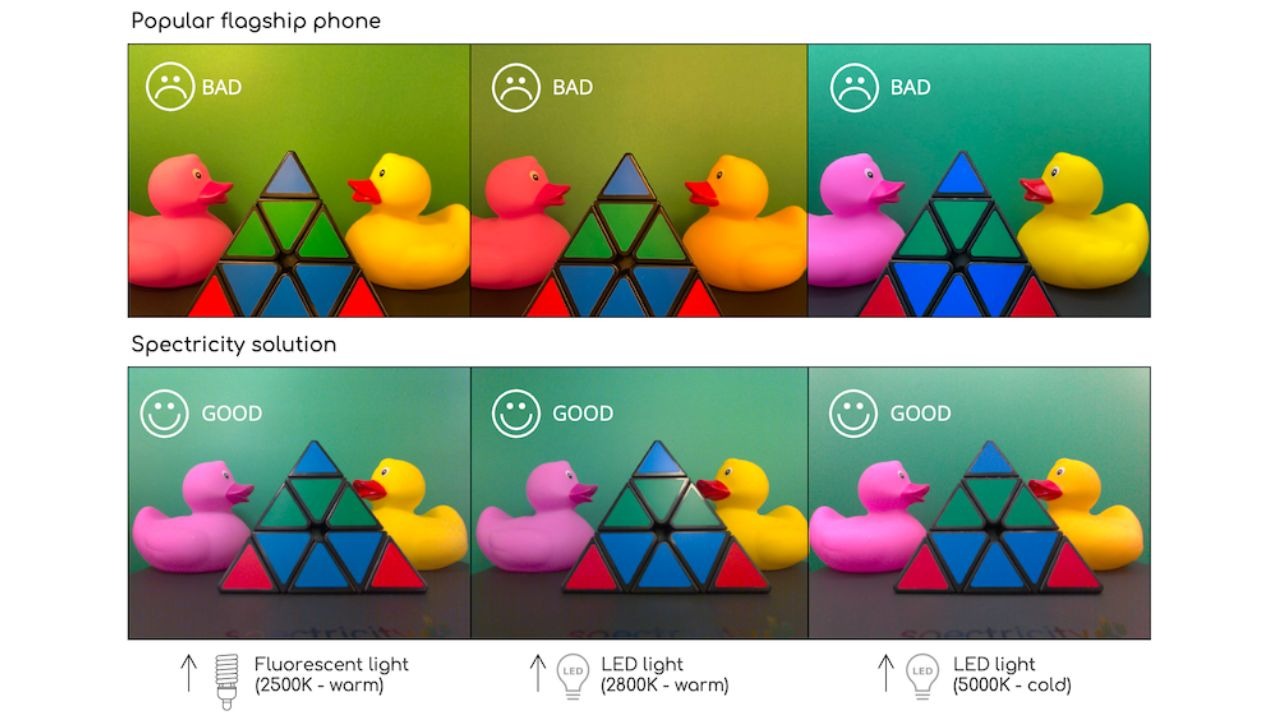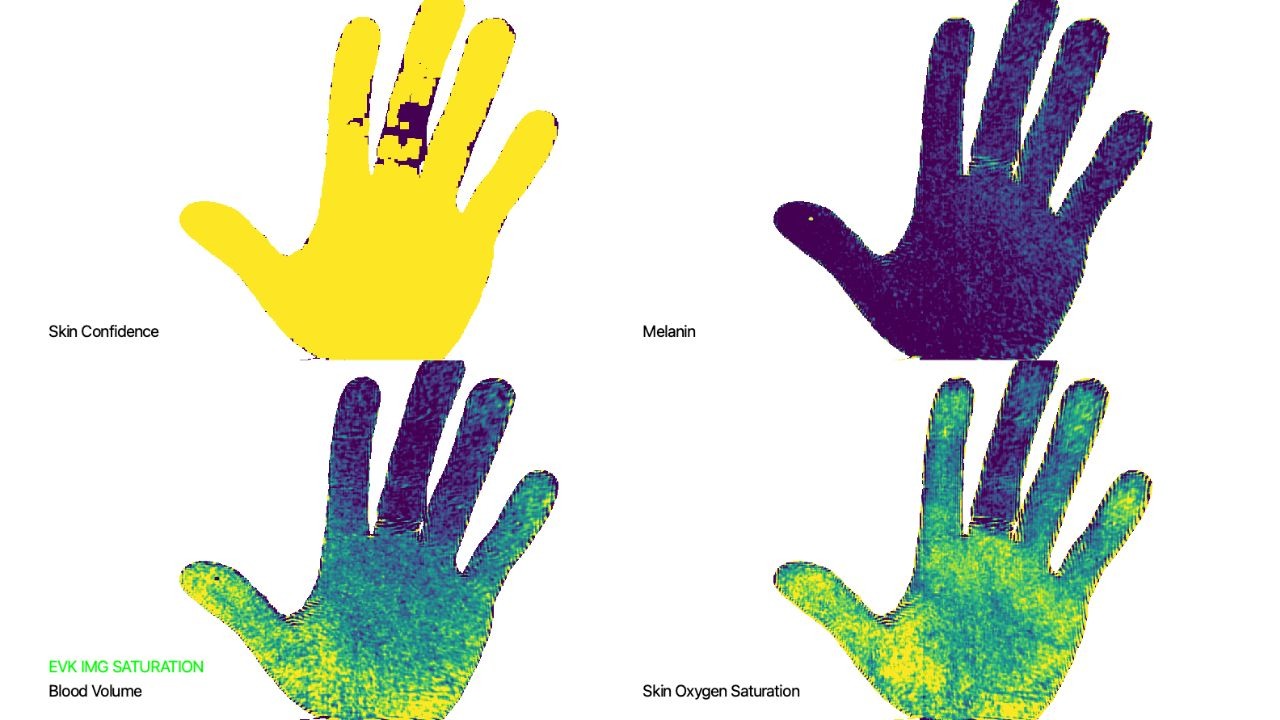You won’t be able to tell the difference between photos taken from a future Galaxy S or an iPhone, thanks to this impressive sensor technology
- Tram Ho
In the smartphone market is full of fierce competition and photography is always one of the fiercest “battlefields”. Besides users’ insatiable desires for better battery capacity, durability, storage space and processing speed, camera quality is always ranked as one of the main factors when choosing to buy a phone. .
However, for a long time, users and technology circles have somewhat separated the photography quality of high-end phones through characteristics such as tone or color temperature from the finished image.
But in the future, that distinction will probably disappear. Because earlier this year, Spectricity, a startup based in Belgium, unveiled a new sensor technology with the extremely simple name, S1.

S1 promises to bring more realistic images to the smartphone camera system. Photo Thenextweb
Spectricity claims the S1 is the first miniaturized and mass-produced true-image spectral sensor for mobile devices. And the company isn’t shy about claiming to be aiming to dominate the sector. Within the next two years, Spectricity boldly predicts their sensor will be in every smartphone.
The Belgian company’s confidence stems from a single central issue, the measurement of “true color” on smartphones. Because according to Spectricty, this is something that even the best smartphones today cannot do.
This problem stems from shortcomings in the white balance software that is being used by smartphone manufacturers to remove unrealistic color tones. By comparison, our natural vision system, the eyes in short, does this very well. When we see a white wall in sunlight or fluorescent lights, our brain adjusts the color temperature to make in both scenes the wall appear white. Smartphones have been trying to do the same thing, but the results are often disappointing.
Because they are limited by the three RGB color channels of red, green, and blue, their automatic white balance algorithms often have trouble adjusting the color temperature and producing unnatural colors. That’s why photos taken under incandescent light bulbs may look more orange than photos taken in bright sunlight, and under shade, objects may appear greener.
“Despite a lot of processing power behind today’s camera systems, none of them can recognize true color,” said Spectricity CEO Vincent Mouret.

S1 produces true colors under different environments. Thenextweb photo
To solve this problem, the S1 sensor uses additional filters to analyze the spectral signature of an object. After sensing the light source in the image, the system will correct the color accordingly.
During the Spectricity demo, the company directly compared the images produced by the S1 sensor with the camera images of the highest-end smartphones. Although the results don’t always match the real thing, the colors in the photos produced by the S1 are much more consistent under different light sources.
The company’s application engineer Michael Jacobs said: “With our solution, you can have the same color regardless of the lighting conditions.”
The application ambitions of this sensor extend even beyond good photos. Spectricity envisions sensor usage for remote cosmetic sales, e-commerce, ID verification, skin health analysis, and even smart gardening.
A key component of these plans is the ability to show skin tones. Cameras on smartphones have long shown they are not good at displaying dark skin. Skin analysis applications for medical purposes, makeup … are also affected when recording inaccurate results. But the S1 with its ability to recognize darker skin could expand access to these services.

S1 will open the door for future skin monitoring applications. Thenextweb photo
Of course, smartphone giants like Apple and Samsung are also investing heavily in creating color fidelity, but Specritity says industry rivals won’t be able to create competitive products. with sensor S1. Because this is the result of a long and focused research process.
More specifically, S1 is a by-product of the Interuniversity Microelectronics Center (IMEC), a research laboratory in nanoelectronics and digital technology. The connection between this center has helped the startup accumulate 19 patents and 66 active applications, as well as 13 PhDs in their research group.
To commercialize the technological innovations, Spectricity has set up a high volume production line and is now ready for mass production.
The S1 is currently rated by major smartphone manufacturers. With smartphone sales trending downward globally, Spectricity is betting that the S1 sensor will give its partner an irresistible edge.
Refer to T theNextWeb
Source : Genk
